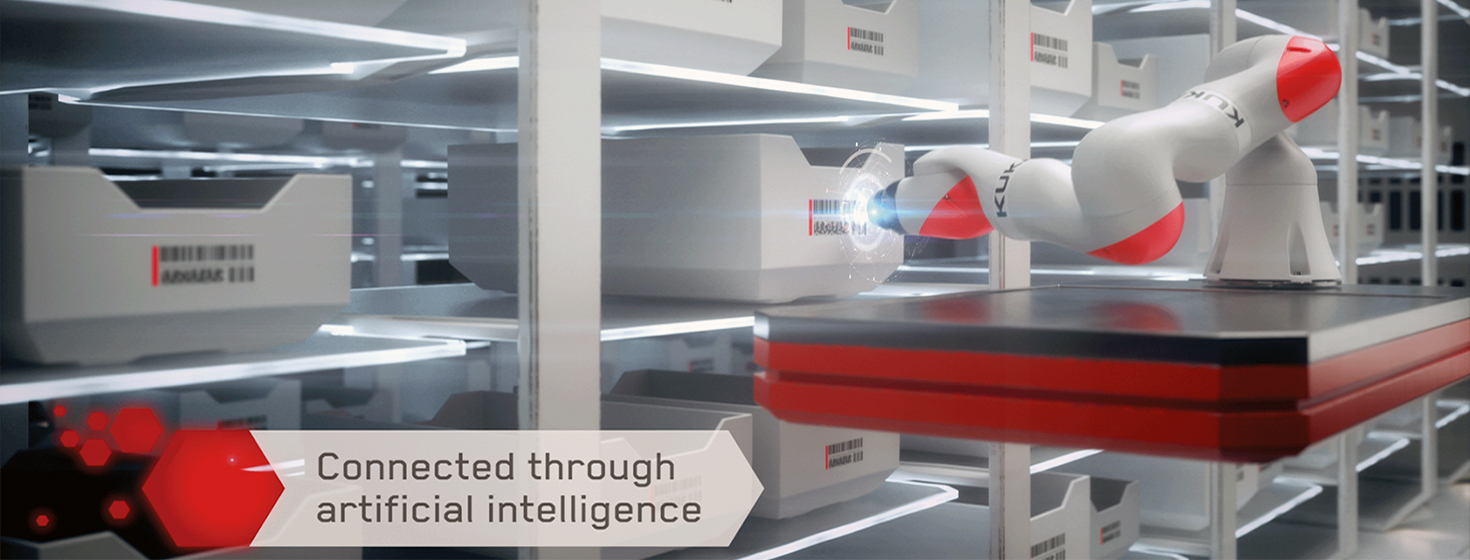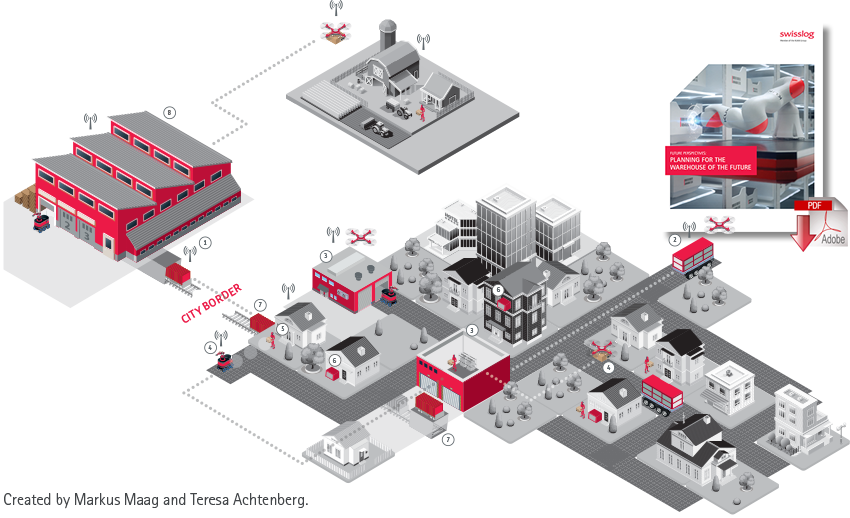People and Robots
When Gregory Moss walks into work at a California-based fulfillment center and approaches his work station for the day, 15 robots are by his side, delivering bins of items for him to sort, stow, or count.
Moss is also one of 25-30 people in his shift who wear a robotics tech vest, allowing him to send a signal to the robots on the floor so he can safely move around the building.
The vest uses advanced sciences, like AI and sensors, to draw an access path around Moss, so the robots automatically slow down or update their route to avoid the area where he is working.
“Let’s say an item fell out of a storage pod and was on the robotic field. I would activate my access path on my vest and walk out onto the floor to retrieve that item and ultimately, input it back into the system. While I’m on the floor, the robots recognize me and my vest. If they get too close to me, they stop,” he said.
This is just one example of how humans and robots work together to get packages to customers.
State-of-the-art technology, like the robotic tech vests, help increase efficiency, reduce defects, lower prices, and improve workplaces around the world.
“This was my first job in fulfillment and on top of that, I got the opportunity to work with robots. I liked it from the beginning,” said Moss. “It’s awesome to say I’m a robotics tech for Amazon.”
Extending Human Capabilities
Amazon currently enlists the help of more than 100,000 robots, which operate using the AWS cloud, to fulfill customer orders.
These robots complement human capability to “help make us smarter,” according to Tye Brady, Amazon robotics chief technologist.
“Our three principles – lower prices, wider selection, and enhanced customer experience – will not scale up by manual labor only, they keep accelerating and growing only if we augment and supplement human intelligence with machine intelligence”
Brady believes we can accomplish this with collaborative robots “who work in concert with our associates.” Sometimes that means extending human activities with robotics. Other times, that means delegating separate tasks to humans and robots.
“There are tasks that humans perform best and there are tasks that can be automated,” Brady said.
For example, in the robotic fulfillment centers, palletizing robotic arms stack totes of product, so associates don’t have to lift 30 pounds over and over again. Investing in these technologies makes associates’ jobs more efficient and allows them to shift their focus to other tasks.
Brady says feedback from associates has been positive and they “like the convenience that robots offer.” Associates have also become more invested in improving the overall robotics experience.
Drive unit robots move pods of bins throughout the fulfillment center and based on feedback from associates, Amazon made the pods yellow. The associates asked for yellow to provide better visibility into each of the bins that are within the pod while brightening up the fulfillment center environment.
“That’s an example of associate feedback that has gone all the way to the engineers to make a better robotics system,” he added.
Preparing the Workforce of the Future
As Amazon continues to deploy more automation, part of Jackie Underberg’s job as director of worldwide engineering research and development is to measure the impact it will have on the workforce.
“We expect there will be a need for a lot more maintenance technicians – up to three-time as many as we have now,” she said. “As we start to install more complicated equipment, like these palletizing robotic arms, we’ll need technicians who can monitor, calibrate, and troubleshoot. This will create more interesting work in the fulfillment centers, where associates can move to problem-solving tasks.”
These jobs also allow people to move into higher-skilled roles and increase their earning potential, she said. It’s up to Underberg and her team to help associates develop these skills and partner with the community to bring in new talent.
“We’ve been working to define the challenge and socialize solutions to address the upcoming skills gap. For example, we’re working on an apprenticeship program to help associates gain experience working with robotics,” she said.
“We also think these positions offer a solution for baby boomers who will retire soon and want to develop new skills.”
Source: Amazon Blog
Image: Amazon
About the Author
Emily Esposito Fulkerson is a content creator at Amazon.
Related Article: Envisioning & Planning the Future Warehouse of 2030
Planning For the Warehouse of the Future
Conceptual view of distribution in the future, showing a large warehouse outside a city supporting multiple urban distribution centers with a variety of transportation options from the central warehouse to the urban DC and from the urban DCs to consumers.
Download the Paper: Planning for the Warehouse of the Future
More: Swisslog Resources on Supply Chain 24/7
Article topics
Email Sign Up



















